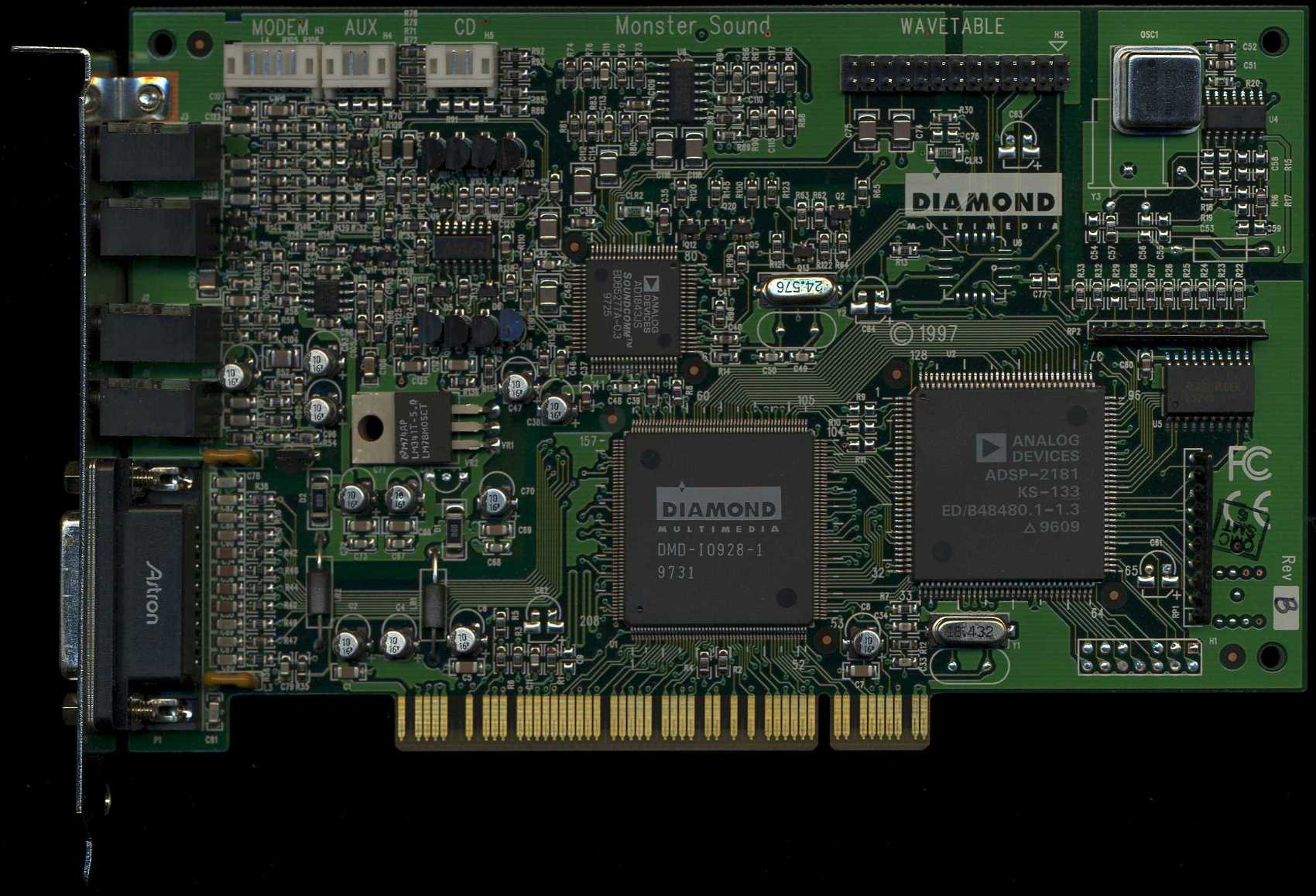Opinion: AMD, Intel, And Nvidia In The Next Ten Years
A Lesson In History: The Death Of The Sound Card
You can trace the evolution of the gaming sound card from the PC speaker to the Tandy 1000, Disney Sound Source, Sound Blaster, Sound Blaster Pro, Pro Audio Spectrum 16, Gravis Ultrasound, Monster Sound PCI, the whole Aureal/Sensaura/EAX era, and finally today, where the majority of gamers do well enough relying on integrated motherboard audio.
Early on, the PC speaker was only capable of very simple beeps and tones in-game (except for the rare title with speech synthesis produced purely via the CPU). Creative's Sound Blaster brought us into the modern era with 8-bit, 22kHz, monaural audio. Next came the SB Pro with stereo audio, and then came the PAS16, which brought CD-quality audio (and a beefy amplifier, actually) to the mainstream PC.
It was finally the Gravis Ultrasound that brought wavetable MIDI synthesis to the masses. With each product generation, new technology brought measurable and noticeable benefits to consumer. Things sounded better. By the end of the DOS era, you were no longer seeing the dramatic quality improvements that had happened over the years in the past.
The introduction of 3D and surround audio in PCs brought a brief but intense era of competition where Aureal, Sensaura, and Creative Labs/EAX fought for dominance. But with today's powerful CPUs, offloading the audio workload is no longer a major issue.
The percentage of total computational power required for audio processing is negligible and when it comes to quality itself; most sound cards are good enough. Though there is a small market for ASIO-capable professional recording devices, the facts speak for themselves. Sales of Creative Labs sound cards in 2008 were 12% lower than those in 2007, sales in 2007 were 22% lower than those in 2006, sales in 2006 were 12% lower than 2005, sales in 2005 were 18% lower than 2004, sales in 2004 were 14% lower than those in 2003, sales in 2003 were 34% lower than 2002, and sales in 2002 were 30% lower than 2001, which itself was 2% lower than 2000.
Do the math and you realize that from 2000 to 2007, the sound card market collapsed by 80% over seven years. The recent stock market crash? That was only a 53% drop during the worst of it, and a 25% drop at current values.
Audiophiles can argue over the subtle nuances that one DAC has over another in terms of musicality or noise floor, and point to the increasing popularity of HDD-based music servers as proof that PC audio has the potential to offer reference-quality audio. While I don't disagree, the majority of games and consumer applications already sound great with today's sound cards because the software isn't designed to take advantage of high-resolution audio.
Get Tom's Hardware's best news and in-depth reviews, straight to your inbox.
No game developer is going to take the time and money to properly record, mix, master, and distribute a soundtrack in 24-bit/96 kHz. In fact, many Hollywood films today are done at 24-bit/48 kHz. For the software developer, the money is better spent on adding new levels or artwork to a game, and the computational horsepower better put into graphics or physics.
Gamers that want better audio from their computer are better off spending an extra $100 on speakers than a sound card. This is because speaker technology advances more slowly than the rest of technology industry. My DeLorean-era Magnepan MG-IIIs, powered by a pair of Adcom GFA-555 IIs, are still commandingly better than anything you can buy at Best Buy (including what’s available in Magnolia AV mini-stores).
When it comes to PC audio, my recommendation really hasn't changed since 1999: get a Klipsch ProMedia setup. Those speakers paired with integrated motherboard audio give you the sweet spot in performance-per-dollar, whether you're talking games or music. If you're looking for something better than that, skip the computer audio market altogether and go with a dedicated receiver and home theater/hi-fi speakers.
The sound card market died once:
- the technology reached the point of diminishing returns for both the consumer and content creator
- advances in semiconductor technology allowed that level of "inflection point" performance to reach a negligible commodity cost
Current page: A Lesson In History: The Death Of The Sound Card
Prev Page Introduction Next Page Have 3D Graphics Reached The Point Of Diminishing Returns?


